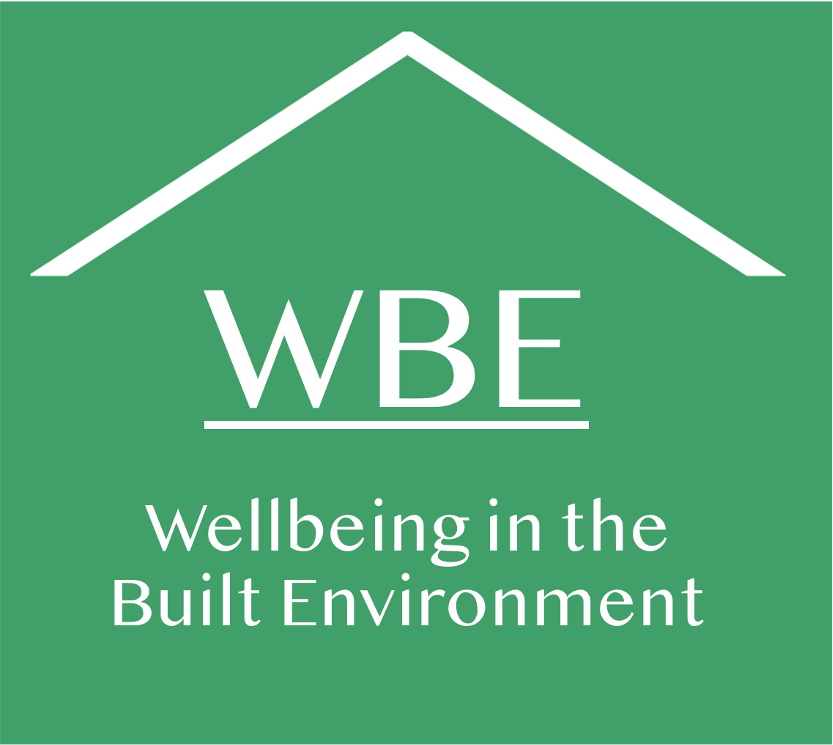CONCEPTUAL FRAMEWORK
The Wellbeing in the Built Environment (WBE) projects evolved out of a collaboration between members of the Sustainable Built Environment Performance Assessment network (SBEPA) at the University of Toronto.
The SBEPA research network is an interdisciplinary group with members drawn from four University of Toronto Faculties, Schools and Institutes.
These include the Faculty of Arts and Science (including the School of Environment, Computer Science, and Physics); the Faculty of Applied Science and Engineering; the John H. Daniels Faculty of Architecture Landscape and Design; and the Dalla Lana School of Public Health, including the Institute of Health Policy, Management and Evaluation.
Combined with members from the Facilities and Services, and Operations teams at the University, the goal of this interdisciplinary network is to undertake research on human and environmental wellbeing in the built environment. The network considers performance to include building, site, human, and environmental parameters.
Rethinking Performance Gaps: A Regenerative Sustainability Approach to Built Environment Performance Assessment
Four SBEPA researchers have published an article on performance gaps in the built environment, presenting a conceptual framework for creating more extensive monitoring and assessment, with an aim to improve, based on the definition of the three performance gaps (Figure 1).

Once assessed, buildings often exhibit three performance gaps. These gaps are found between what was expected or predicted in building design, and what was measured after the fact of occupancy.
On the environmental systems side, the iconic Prediction gap exists between modelled and actual energy consumption: too often buildings designed to meet specific energy targets quickly surpass them. The Expectations Gap is a qualitative gap that exists between the expected and actual or lived experience of building occupants and users (for example, expected room conditions, or support for a sustainable lifestyle – and what was ultimately experienced). If we quantitatively measure building performance and compare that to occupant perception of building performance, we have a third, hybrid gap – the Outcomes gap.
This conceptual framework of investigation, therefore, includes exploration of three performance gaps:
- Prediction gap: predicted versus actual resource use (e.g. modelled and measured energy, water consumption);
- Expectations gap: expected versus actual lived experience (e.g. Pre- and post-occupancy evaluations);
- Outcomes gap: measured versus perceived environmental conditions (e.g. thermal comfort measurements and survey results).
Performance gaps lend uncertainty to a large range of building and construction processes: in procurement, planning, design, and operations, and uncertainty which hampers benchmarking and targeting. In the context of climate change, steady urbanization and population growth, performance gaps constitute complex problems in need of interdisciplinary approaches, longitudinal research, and integrated solutions.
We are planning to assess each of these gaps in U of T Living Lab buildings, through advanced sensoring and monitoring instrumentation, pre- and post-occupancy evaluation, and simulation and modelling. The different disciplines involved bring a range of approaches to the complex issues concerning the built environment. Highlighting positive co-benefits between, for example, how daylit spaces save on electric energy and also are linked to visitor and employee satisfaction and architectural quality, can be a way to gain support for design initiatives that have up-front cost.
In going beyond the traditional energy use metrics that Prediction gap studies focus on, we seek not necessarily to close these gaps, but first to trace the complexity that drives them, and then to use the gaps themselves to create better outcomes for humans and environmental wellbeing. This is in service of the larger goal of regenerative sustainability, aiming at improving environmental performance and human wellbeing in net positive, mutually supportive ways.
Philosophically, getting at the heart of the prediction enterprise, we question which of the built environment performance metrics are the “real” ones. For whom is the building performing? If occupants are cold, but quantitative metrics are indicating that the building is performing as intended, then are the occupants or are the metrics “wrong”? If performance gaps are largely due to behavioural and institutional factors coinciding in the complex system that is a whole building, then simply integrating more data at the early design phase may not provide a more accurate picture of performance.
We think that early design processes of predictive analysis could be supplemented with scenario analysis and backcasting approaches. These practices would allow for an iterative, innovative space for design teams to identify more resilient design strategies. In this way, performance gaps could instead act as “creative resources”, thereby providing signals of abundance, “maladaptivity”, and a cause for reflection on design and process.
